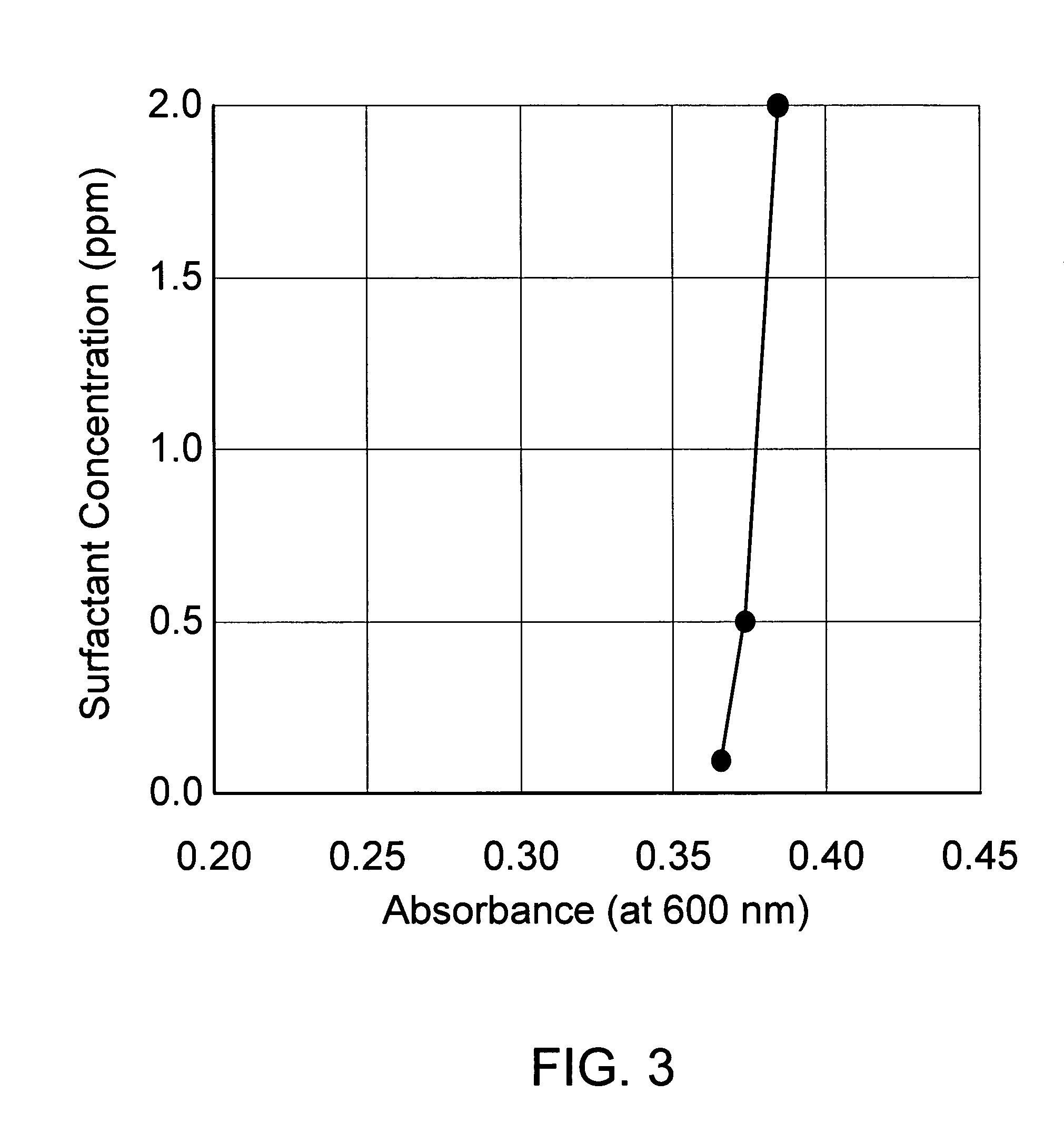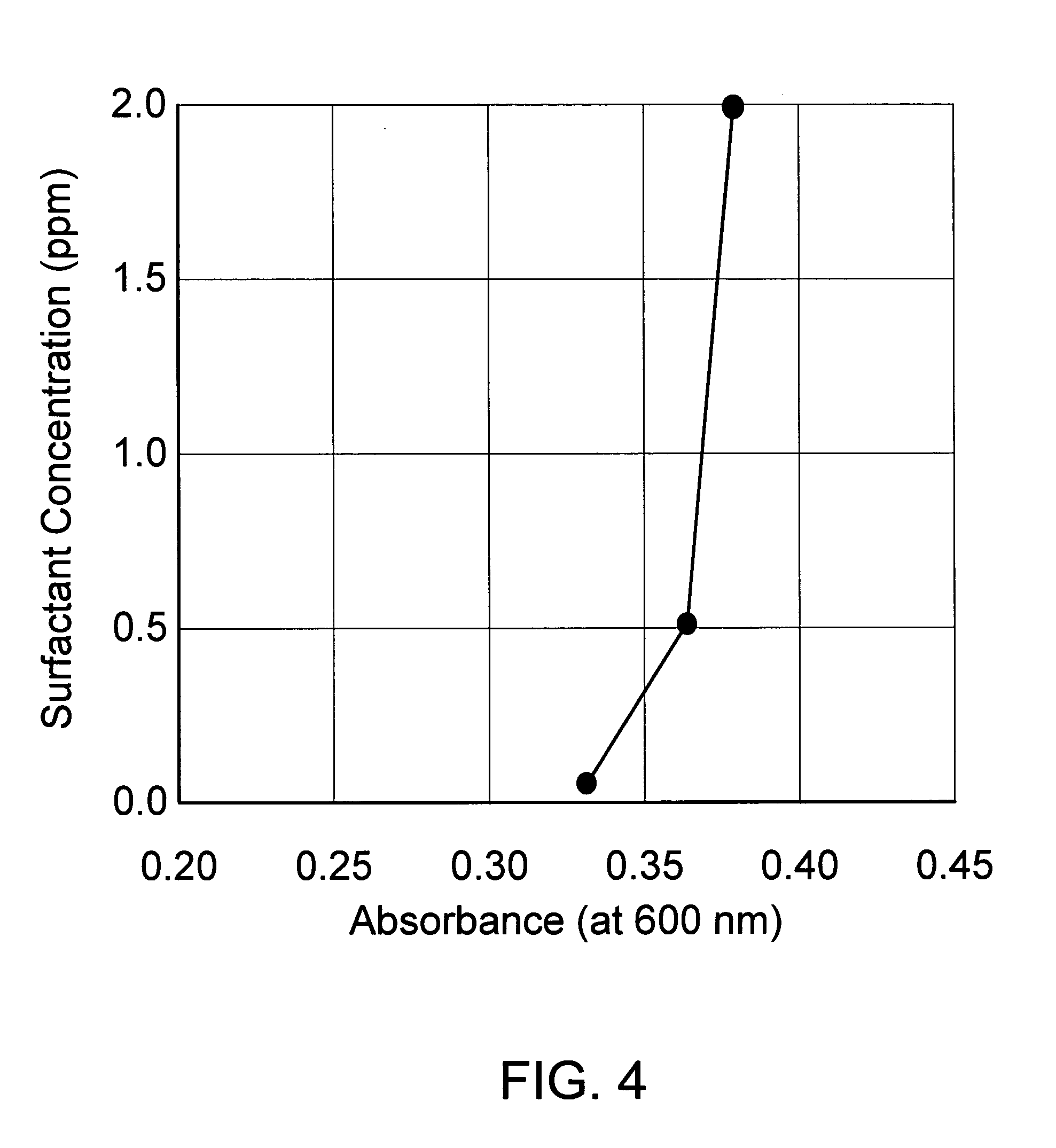Method for determining surfactant concentration in aqueous solutions
a technology of surfactant concentration and analytical methods, applied in chemical methods analysis, chemical indicators, instruments, etc., can solve the problems of disposal problems and health concerns, time-consuming two-phase techniques, and may be relatively expensiv
- Summary
- Abstract
- Description
- Claims
- Application Information
AI Technical Summary
Benefits of technology
Problems solved by technology
Method used
Image
Examples
Embodiment Construction
[0018] Surfactants are substances that drastically lower surface tension, a term derived from their function as surface active agents. Surfactants tend to be strongly absorbed at air-water interfaces, include both polar and non-polar portions and may generally be categorized as cationic, anionic or nonionic. Examples of anionic surfactants include sodium stearate, sodium oleate, sodium dodecyl sulfate and dodecyl benzene sulfonate. Examples of cationic surfactants include dodecylamine hydrochloride and hexadecyltrimethyl ammonium bromide. Examples of nonionic surfactants include polyethylene oxides, sorbitan esters (spans) and polyoxyethylene sorbitan esters (tweens).
[0019] At low concentrations surfactants can form an aqueous solution with some of the surfactant molecules absorbing onto vessel walls or at the air / water interface. As the surfactant concentration increases, additional surfactant molecules are attracted to the air / water interface surface and eventually form a monolay...
PUM
| Property | Measurement | Unit |
|---|---|---|
| wavelength | aaaaa | aaaaa |
| wavelength | aaaaa | aaaaa |
| wavelength | aaaaa | aaaaa |
Abstract
Description
Claims
Application Information
 Login to View More
Login to View More - R&D
- Intellectual Property
- Life Sciences
- Materials
- Tech Scout
- Unparalleled Data Quality
- Higher Quality Content
- 60% Fewer Hallucinations
Browse by: Latest US Patents, China's latest patents, Technical Efficacy Thesaurus, Application Domain, Technology Topic, Popular Technical Reports.
© 2025 PatSnap. All rights reserved.Legal|Privacy policy|Modern Slavery Act Transparency Statement|Sitemap|About US| Contact US: help@patsnap.com



